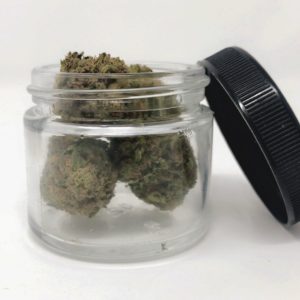Cannabis has long been useful for many different conditions that revolve around pain and chronic discomfort in humans. One of the most debilitating of those is fibromyalgia. In this article we’ll discuss what fibromyalgia is and how cannabis products can help those who suffer from it.
What is Fibromyalgia
Simply put, fibromyalgia is a condition that causes pain in every part of the body, causing sleep problems, fatigue, and a lot of distress from a disrupted life. Usually those who suffer from fibromyalgia find themselves more sensitive to pain than people who don’t have the condition. Researchers have not yet discovered a cause for fibromyalgia, but it is a manageable condition usually treated by medication and lifestyle changes.
Signs and Symptoms
There are a variety of symptoms associated with fibromyalgia, but some of the most common include:
- Pain and stiffness
- Fatigue
- Depression
- Anxiety
- Difficulty sleeping
- Memory, thinking, and concentration issues
- Headaches and migraines
- Tingling or numbness in the hands and feet
- Pain in the face
- Pain in the jaw, including temporomandibular joint syndrome
- Digestive problems often accompanied by pain, bloating, constipation, or IBS
Risk Factors
The most common risk factors are:
- Age. While fibromyalgia can affect people of any age, it is most often seen in middle aged or older adults.
- Lupus or Rheumatoid Arthritis. A person suffering from either of these conditions is more likely to develop fibromyalgia as they age.
- Women. So far research suggests that women are affected by fibromyalgia twice as often as men.
- Stress or trauma. Incidents that cause stress or PTSD have been found to go hand-in-hand with fibromyalgia issues.
- Repetitive injuries. This includes repetitive stress on the joints.
- Illness. Even a viral infection can lead to issues with fibromyalgia.
- Family history. Fibromyalgia is hereditary and can often be seen within a family group.
- Obesity. Being overweight can often open up the body for fibromyalgia.
Who Does it Affect
Worldwide, about 3-6% of the population suffer from this disease, the majority of which are women [1]. The average age range of those diagnosed with the condition is 35-45 years old, but many of them showed symptoms earlier [2]. With some many people suffering from a condition that causes issues such as chronic pain, depression, and anxiety many of them are looking for new treatment options — perhaps something more natural that can assist them with their healing. That’s where cannabis often finds its way into the treatment plan. Before discussing how cannabis can help, we need to first understand how the chemical compounds found within cannabis interact with the human body.
The Endocannabinoid System
The endocannabinoid system (ECS) functions for the main purpose of maintaining a constant state of homeostasis in the body. This is important because all of the body’s internal systems need to be in equilibrium to work effectively. If even one instability is registered, the ECS activates and rushes to the location of the issue to quickly work to stabilize the condition.
There are three primary elements that make up the endocannabinoid system:
- Endocannabinoids. The chemical compounds the body naturally produces. These are structurally similar to cannabinoids, the chemical compounds found in cannabis.
- Cannabinoid receptors. Found on the surface of cells throughout the entire body, endocannabinoids and cannabinoids are both able to attach to receptors allowing them to communicate with a variety of systems inside the body. This communication is what enables the ECS to detect and correct instability and what allows cannabis the ability to interact with so many systems of the human body.
- Enzymes. These are proteins that work to break down the cannabinoids and endocannabinoids after they’ve attached themselves to the receptors and after successful homeostasis has been achieved. Enzymes are there to make sure the cannabinoids do not create an overcorrection.
Since cannabinoids from cannabis plants are very similar to the naturally produced compounds in the body, it’s possible for cannabinoid compounds to attach to the receptors just as endocannabinoids do. CBD, for instance, has the ability to bind to both the CB1 and CB2 receptors, and once attached acts as a blocker, binding to receptors and dampening their signals.
The Study
A recent study [3] found that cannabis can be used effectively to treat issues associated with fibromyalgia, like chronic and widespread pain. This study is important because often chronic pain conditions like fibromyalgia are treated with opioids, prescription medication that is now commonly known to lead to addiction and misuse. In the United States there is an epidemic of opioid addiction, so scientists are doing their best to find safe and effective alternatives that can help those who need relief, without risking more dangerous side effects.
Participants
This particular study included over one hundred patients suffering from fibromyalgia, interviewing 66 of them over the six months of treatment. The average age of the participants was 52 years old and more than 90% of them were women, since women make up the large majority of fibromyalgia sufferers.
The study focused primarily on those who were already taking medication and had an otherwise stable treatment plan, yet had not found the relief they needed. Most of the participants were already taking two or three other medications when they started the study, with most medications falling into categories like sedatives like opioids, anticonvulsants, nerve blockers, and antidepressants. Almost half (47%) of the participants who were taking painkillers actually found that they got enough relief from the cannabis treatment that they were able to reduce or stop using their painkillers altogether.
Overall, between one third and one half of the patients experienced excellent results in regards to improved sleep, lessened anxiety, and improved depression and pain levels. The study also indicated that cannabis was more effective in those patients who were overweight or obese.
Tinctures
For the study, scientists decided to use two types of pharmaceutical-grade cannabis flowers, one had more THC than CBD and the other had more CBD than THC. They used olive oil to make a tincture and patients were dosed using a dropper. They took two doses a day, the CBD heavy oil in the morning and the higher THC oil at night. CBD does not cause intoxication or psychoactive properties, so using the oil with more CBD during the day was optimal to ensure patients were able to go about their day as usual. While THC is known to cause an intoxicated feeling and can be disruptive to day-to-day tasks and activities, it is also potent in helping individuals sleep and is known to be more effective than CBD for managing pain, so that was the reason to use it at night.
By giving participants two types of tinctures to use, they were able to see what worked best and what had the best balance of effectiveness to usefulness depending on their individual lifestyles. Researchers didn’t set a specific dosing regime, as there just isn’t enough research at this time to provide evidence of any benefit to doing so. Overall, most scientists agree at this point it isn’t realistic to expect one ideal dose to exist since cannabis itself treats such a wide variety of conditions and symptoms.
For this study, researchers recommended a certain dosage for participants, but advised them to adjust that depending on their own needs and reaction to the recommended dosage.
Treatment
As mentioned earlier, more than a third of the participants experienced significant improvements in both their chronic sleep and fibromyalgia symptoms. Half of the participants reported at least moderate benefits in the treatment of their anxiety and depression because of the added cannabis to their treatment plan.
This occurrence is actually very common with the addition of cannabis to a treatment plan. Often cannabinoids work like they are treating an underlying problem instead of just covering up the symptoms. Researchers believe this may have something to do with something called clinical endocannabinoid deficiency syndrome, a theory that states that certain diseases present themselves the endocannabinoid system is too weak to regulate the variety of systems it controls. Researchers believe that by taking plant cannabinoids to supplement the ECS, they can work to treat and correct the root cause of the problem [4].
Conclusion
While there is still much research that needs to be done and more studies performed on the benefits of specific cannabinoids for diseases like fibromyalgia, the evidence so far is promising and could help provide millions of people with an effective treatment option that does not include prescription painkillers and dangerous opioids, something most people are wary of. Cannabis and its cannabinoids have the ability to provide comparable relief without the risk of addiction or withdrawal.


